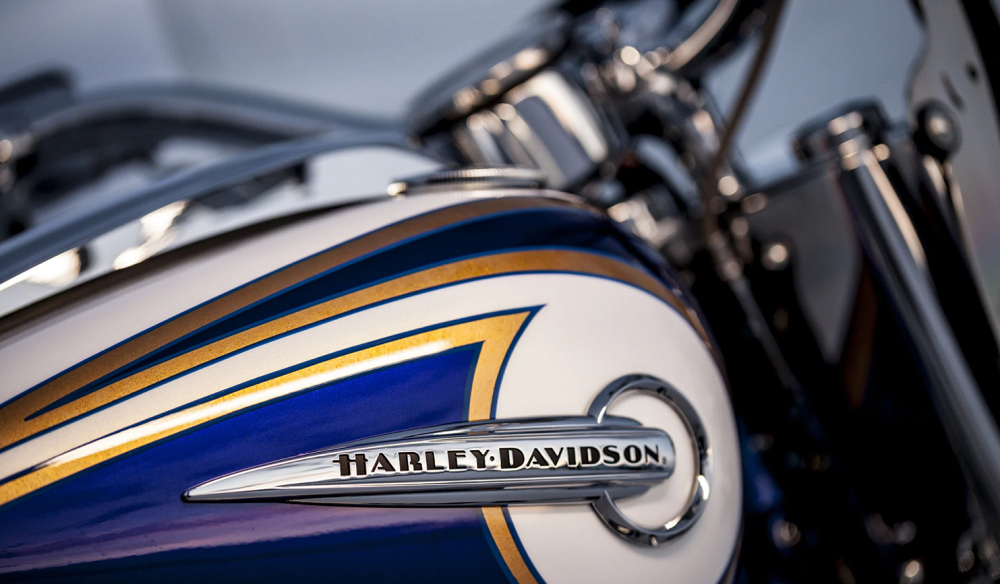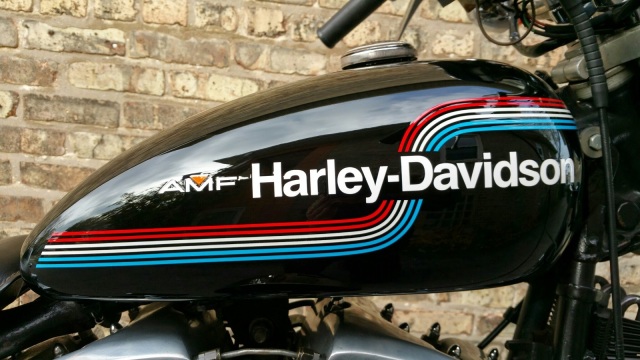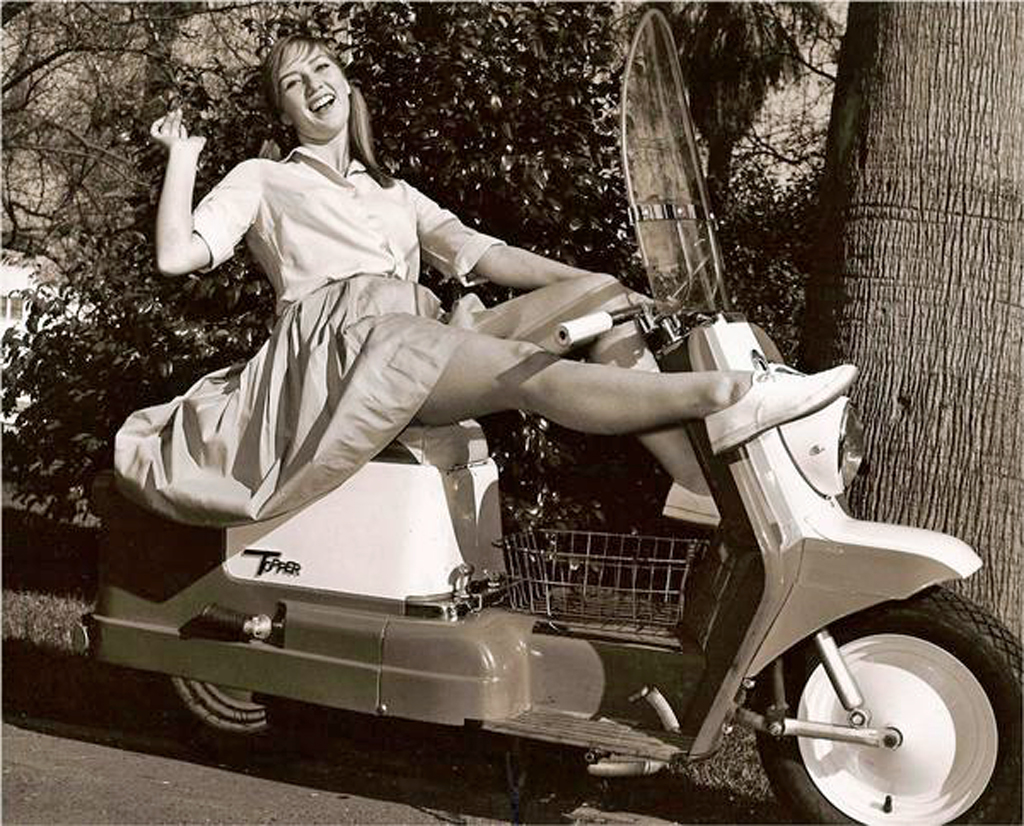Harley-Davidson’s Millennial-Marketing Challenge
How will H-D silence critics who think it’s out of touch with millennials? Resurrect old hits? New sub-brand? We consider the options.
Harley-Davidson announced its third-quarter earnings recently, and, surprisingly, they were actually better than the dismal expectations many on Wall Street predicted. However, overall sales and profits slumped a bit, and net income compared to the third quarter of 2016 was down more than 40%. However, sales of Harley’s new 2018 Softails were one highlight. Harley-Davidson has said that the eight redesigned cruisers — the company’s largest product development project ever — have been selling better than the 2017 bikes, up 23.6% over the previous models.
“We remain committed to aggressively managing supply in line with demand,” Harley-Davidson’s C.F.O, John Olin, said in a press statement while announcing the Motor Company’s third quarter profits, in which Harley also increased its share of the heavyweight motorcycle market to 53%. This is especially important when you consider that the U.S. heavyweight motorcycle market has been weak for eight consecutive quarters, according to a report in the Milwaukee Journal Sentinel. “It definitely feels like it’s in recession,” Edward Jones Co. financial analyst Robin Diedrich told the Sentinel last month.

However, not too long ago, after Harley-Davidson released its second quarter profits last July, the press was quick to begin predicting Harley’s doom. One reason routinely given for the proposed death of the iconic brand: changing demographics. The general consensus in the mainstream press seems to be that millennials are more interested in spending their money on moustache wax than motorcycles, and Harley’s go-to market of baby boomers are getting too old to ride. Harley addressed the media’s outlook during the second quarter announcement.
“We are pleased with our ability to deliver strong margins in the quarter despite challenging market conditions, particularly in the U.S.,” said Matt Levatich, president and CEO of Harley-Davidson. “…Our long-term strategy, focused on building the next generation of Harley-Davidson riders, is our true north. Our new product investment is one pillar of our long-term strategy to build riders globally and we are energized by the strength of our model year 2018 motorcycles.”
A few questions remain, however: How does Harley plan to entice a new generation of riders who are reportedly disinterested in joining the H.O.G. community? Exactly how will H-D’s long-term strategy work? Can it work, or will the bumpy road ahead prove to be too challenging for Harley?
Tracing Trends: Motorcyle Sales & Predictions
Motorcycle sales in the United States peaked in 2006, before starting a long steep slide due to the recession, natural disasters that affected the global economy, and the aging of baby boomers. Instead of buying, traditional fans are selling.
The last time the baby boomers bowed out of the motorcycle market en masse was when they started to settle down and start families. About a million new bikes were sold each year from 1970 to 1980. In 1985, bike sales nationwide were down about 25%, and car sales were up about the same percentage. By 1990, bike sales were off by more than 50% compared to five years prior and didn’t start to rise again until 1998, when the boomers’ kids left home and boomers fed their need for speed — or midlife crisis — with a brand-new Harley in the garage.

Even with the huge bike market of the 1970s, there were the difficult AMF years when Harley had issues with an inability to appeal to young boomers. But the company met the marketing challenge head on only to come out successful in the end. Throughout that slow period, the Motor Company flirted with bankruptcy and reportedly needed a sweetheart tariff deal from Ronald Reagan to survive. The thought at the time was that as these young riders outgrew their little Japanese bikes and matured, they would buy touring bikes from Harley. The current thinking seems to be much the same. Harley-Davidson is as much reliant on the profits they get from touring bikes as the big automakers are to their trucks and SUVs.
Harley-Davidson is also in a sort of bind, with the general public having a narrow or misconceived perception of what Harley is. To a non-Harley fan, H-D’s bikes are big, loud, and all look alike. The Street 500 and 750 are just smaller versions of that same image, even though they have some of the newest thinking to come out of Milwaukee in years. Perhaps the Street Rod 750 will break through in a way the other versions haven’t?
In the bike industry, there are no companies comparable to Harley, but when it comes to planning and implementing very successful sales and marketing strategies, we can look at some examples from the automotive industry as a whole for comparison. Both Jeep and Porsche are narrowly-focused companies with a core fanbase who love their products. For decades Jeep fans bought the tough, offroad-focused Wrangler and Jeep’s other off-road 4x4s. Porsche was known as a sports-car company, selling an evolution of the same rear-engined, air-cooled car for nearly 40 years, and finding little success when dabbling in luxury GT cars (928) or traditional front-engined sports cars.
To a non-Harley fan, its bikes are loud & all look alike. The Street 500 & 750 are just smaller versions of that image, even though they have some of the newest thinking to come out in years. Perhaps the 750 will break through in a way the others haven’t?
When Jeep first introduced its modern, front-wheel drive-based compact crossovers the Compass and the Patriot, “real Jeep” owners laughed at them. These were four cylinder, economy cars dressed up in a Jeep costume, which shared more with a Dodge Neon than with a Wrangler. But they were solid money makers, and both stayed in the lineup for almost 10 years, pulling in buyers who were unlikely to buy any other Jeep. Now, between the Renegade, the Cherokee, and the updated Compass, half of the Jeep lineup is “car-based.”
Porsche sports car fans flipped their wigs when the Cayenne sport ute was announced, and practically keeled over at the sight of the 5,000 lb luxury wagon when it appeared in 2003. Not much later, there were rumors of a four-door sedan coming, and worse yet, it had the motor out front. But the year they introduced that SUV, profits jumped nearly 20% p- not unit sales, profits. Things get a bit murky after 2010 because Porsche became part of VW, mostly due to financial maneuvering, not low profits, but it looks like Porsche saw a profit increase of about 18% when they introduced the Panamera sedan. Porsche sells more SUVs or sedans than 911 and Boxster sports cars combined.

Of course, it was just this sort of diversification that had the Harley-Davidson name plastered on snowmobiles and golf carts under AMF. That was taking the idea about two steps too far, and no one would suggest Harley try making anything other than motorcycles. Except maybe a new Topper scooter? But there is a rich history of models to draw from that were not cruisers, that could provide them with their own version of the Scrambler or Panamera.
The SUV of the motorcycle world is the adventure bike/dual sport, and like most SUVs they almost never go off-road. Back in the 1970s, Harley had a whole line of street-legal dirt bikes. It would seem fairly simple now to create smaller entry-level machines, dressed up for the dirt, using parts from the Street lineup. Bikes powered by 250cc and 400cc singles, with spoked wheels and a rough and ready style, seem like they would fit in at the bottom of the lineup. Resurrect the old name for the Harley 100cc play bike, the Baja, as a new sub-brand and cater to young buyers with copious motorclothes and accessories, which Harley already excels at.
As an added bonus, Harley could also use some of the parts to offer spoked-wheel “deluxe” versions of the Street series. Another “new” style of bike for Harley, and reborn name from the past, would be a light retro sporty bike called “Sprint.” The Aermacchi Sprint 250 and 350 singles were one of H-D’s most popular small-bike offerings.
Smaller bikes are big business worldwide if you can sell them profitably, and to do that, Harley could leverage its Indian factory to make a lot of the parts, with final assembly in the USA. It seems feasible that Harley could break even with prices about where Honda set its new Rebel 300 ($4,500) and 500 ($6,000) since the H-D Street 500 is currently only $6,850. At the moment, in Japan, Harley has no bike that squeezes under the 400cc restricted limit (and motorcyclists in Japan reportedly buy almost as many bikes annually as the U.S.), so it seems this market is worth reaching out to more aggressively.
Even with the huge bike market of the 1970s, there were the difficult AMF years when Harley had issues with an inability to appeal to young boomers. But the company met the marketing challenge head on only to come out successful in the end.
Triumph sells plenty of Bonnevilles, and are partnering with a big company in India to develop exactly this sort of range. Bajaj Auto in India makes a lineup of bikes in the 100-400cc displacement category, and are working to develop the new small Triumphs based on their engine designs. Harley also wants to be big in India, as its factory there proves, but the majority of roads there are better suited to lighter, dirt-friendly machinery, and nimble city bikes, not big cruisers. A simple sub-400 lb single would manage the traffic in Delhi and the cow paths in the countryside equally well.
In many ways, Harley also faces an image problem and limited sales outreach here in the U.S. For instance, unlike Harley customers, many folks shopping for automobiles might visit a neighborhood car dealership that happens to carry Chevy, Ford, Honda, Nissan, and the like, while most Harley shops sell only Harleys. Young riders already think they know what Harley-Davidson is all about. Maybe it’s time to prove that young people don’t know everything? We’re confident that Harley-Davidson will meet the challenge, and then some.
>>Sound off with your thoughts in the forum.




